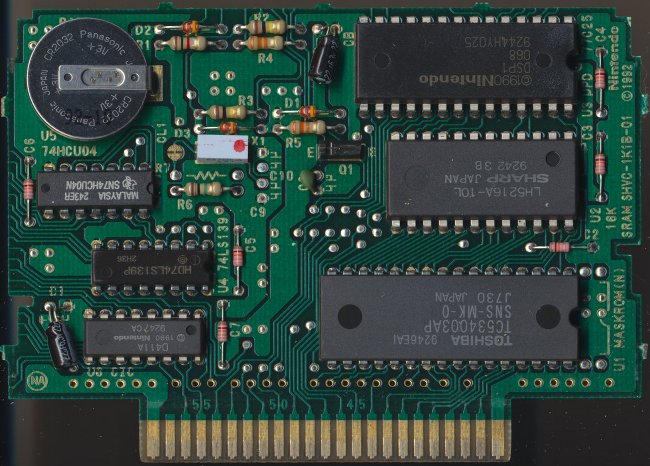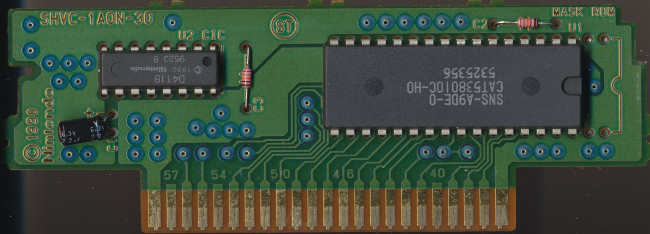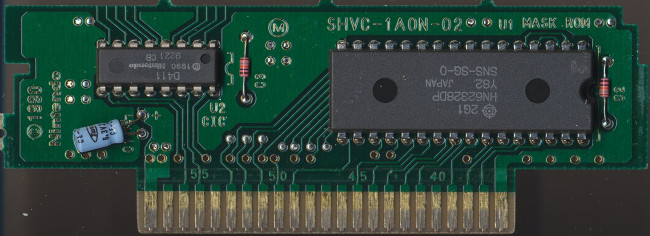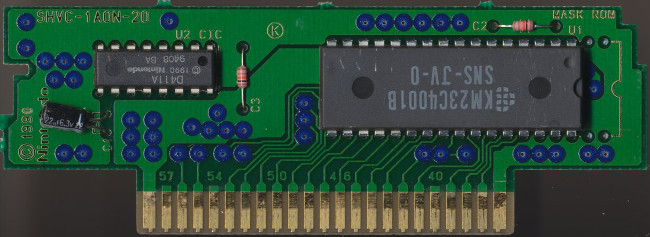Games
PCB
Archive
Chip
Archive
Cart/Box
Scans
Articles
Peripherals
Prototypes
Unreleased
Games
Rarities
Homebrew
Emulation
Links
Email: snes_central@yahoo.ca
Guidelines for submitting PCB scansGuidelines for submitting PCB scans |
| If you want to submit a PCB scan for SNES Central, please follow these guidelines. By:
Evan G
|
I appreciate anyone who will take the time to add to the SNES Central collection of scans. With PCB scans, we can verify ROM revisions, determine the memory mapping for accurate emulation, and find the periods when games were manufactured. In order to make it easier for me to add things to the site, please follow the guidelines below when submitting a scan. By doing this, it will cut down the amount of time I spend on scans, so that I can spend time on other aspects of preservation, such as investigating prototypes. If you are submitting scans, email me. Please note, I am specifically looking for (in order of priority) ROM revision variants, PCB type variants, coprocessor variants and manufacturing date variants. Always check the game page to see if a relevant scan already exists.
Here is an example of a PCB scan:
 |
| PCB scan of Super Mario Kart |
For each scan, there are certain pieces of information that I record. If the letters on scans are hard to read, please write them down in a separate document. Here is the list of information I need, and in brackets what they correspond to in the above scan:
- ROM chip serial code (SNS-MK-0)
- Region (can be deduced from the serial code)
- Manufacturing date of the ROM chip.(9246)
- PCB serial code (SHVC-1K1B-01)
- CIC chip type (D411)
- Save RAM size (16 kbit)
- Logic circuit chips (SN74LS139P / MC74NCU04N)
- Coprocessors (DSP 1)
Note, if the scan is good enough to read the above information, you don't need to record it. The only thing that can sometimes be problematic is if the chip has really faint writing on it, which sometimes happens with the decoder chips. The RAM size can also sometimes be hard to read if a capacitor covers it, but I can figure it out from the PCB serial code.
For the scan, I recommend using a CCD scanner. These will produce a nice scan. The other common scanner type, CIS scanners, can only capture details of things that are directly contacting the surface, and therefore you will not be able to read the information on the actual board. I will not accept scans like this. Although I definitely prefer scan images, a high quality photograph with all the information visible is also acceptable. I recommend scanning at a fairly high resolution (e.g. 300 DPI), for cropping and rotating to preserve clarity. Please resize the image so that it is 650 pixels wide. I've been using GIMP to do this, saving at a jpg quality level of 90. This should produce a sufficiently good quality image to read all the above information. Please name the file using the following scheme:
ROM_serial_code-pcb-front-9xxx.jpg
Where 9xxx is the manufacturing date. For the example PCB above, it has the file name:
SNS-MK-0-pcb-front-9246.jpg
If you have more than one PCB scan to submit, put them in separate folders, with the folder name being the game name, so I can quickly identify it.
For the manufacturing date, if there is more than one ROM chip, I just want the one of the first ROM chip (labelled U1 on the PCB board, usually). It is usually a four digit number, with the first two digits representing the year, and the last two representing the week number (should be between 01 and 53). As you can see from the above scan, the serial code can sometimes be part of a longer string of characters, but it should be pretty obvious what it is. There are some manufacturers that have their own scheme, which are detailed below:
 |
| CAT5* MASKROM (I couldn't find the manufacturer) - the date code is 3 digits rather than four. The first three numbers of the bottom line, in this case 532 - 9532 |
 |
| Hitachi MASKROM |
Hitachi chips have a three digit date code, Year-Month-Week (2G1 in the above scan). I found a site that has this decoded this. The first number is the last number of the year (above, 1992). The second character is the month, see the below list to find out which one. The third character is the week of that month. You can use this information, along with a site with listings of week number (example) to find the approximate four digit code that I want. In the above example, it is 9227.
- A - January
- B - February
- C - March
- D - April
- E - May
- F - June
- G - July
- H - August
- J - September
- K - October
- L - November
- M - December
 |
| Ricoh RP538000G MASKROMs were used in a few games around 1994. Though there are various numbers on the chip, I could not find what the date stamp was. I suspect it is "4EB" (1994), but I don't know the rest. If anyone finds out, let me know! |
 |
| Samsung MASKROMs - these are fairly common and do NOT have a date stamp. Unless some other aspect of the PCB is a variant I don't have (i.e. ROM variant or PCB variant), don't bother scanning. |